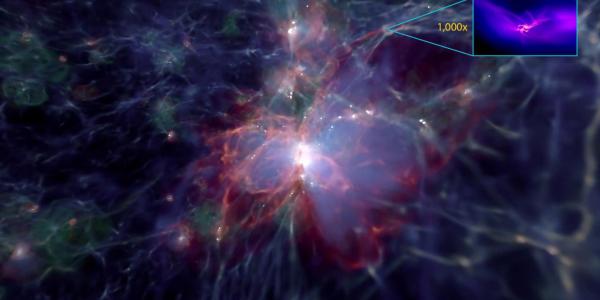Nuclear Physics Seminar: Garrett King, Lorenzo Andreoli, & Ziyuan Zhang
Garrett King: Investigation of electroweak processes with Chiral Effective Field Theory
Understanding electroweak interactions in nuclei is crucial for future fundamental physics investigations, such as neutrinoless double beta decay experiments and long-baseline experiments measuring neutrino oscillation parameters. In this work, we present ab initio calculations of low-energy electroweak processes in light nuclei for vanishing and moderate momentum transfer using variational and Green's Function Monte Carlo methods. Calculations of nuclear matrix elements employ the Norfolk potential, a high-quality local chiral interaction containing two- (NN) and three-body (3N) forces. Employing one- and two-body axial currents consistent with the Norfolk potential, we calculate Gamow-Teller (GT) reduced matrix elements and one-and two-body GT transition densities for A < 10 nuclei. These studies provide a validation of nuclear many-body correlations and currents entering ab initio calculations and demonstrate the behavior of individual contributions to the axial current in the limit of vanishing momentum transfer. Additionally, we calculate muon capture rates, allowing us to validate contributions to the electroweak charge and current operators at momentum transfers on the order of the muon mass.
----------------------------------------------------------------
Lorenzo Andreoli: Quantum Monte Carlo calculations of electron scattering from light nuclei
I will present ab initio Quantum Monte Carlo calculations for quasielastic scattering of electrons from light nuclei. Using the Argonne v18 realistic two-nucleon interaction, together with a propagation in imaginary-time, we evaluate the short-time response of nuclei. This method consistently includes two-body physics, in the nucleon-nucleon interaction and the electromagnetic currents. It also allows us to study scattering channels involving nucleons in back-to-back kinematics, of experimental interest and currently tested at, e.g., JLab. I will present results for longitudinal and transverse response functions, as well as response densities.
------------------------------------------------------------------
Ziyuan Zhang: Improved treatment of neutron star cooling via modified Urca
Most neutron stars cool predominantly via the modified Urca process, in which emitted neutrinos carry away energy. The traditional treatment for the in-medium nucleon propagator in the modified Urca process uses crude approximations. We are reformulating the propagator by including the nucleon self-energy and will examine the effect on this new propagator on the neutrino emissivity due to the modified Urca process.

